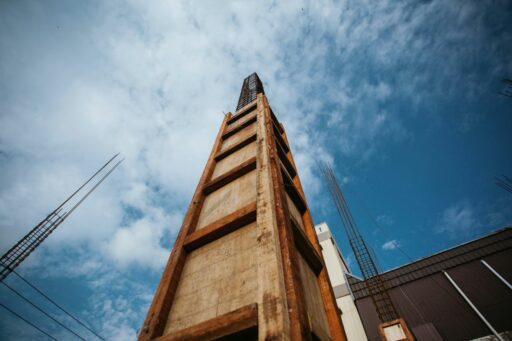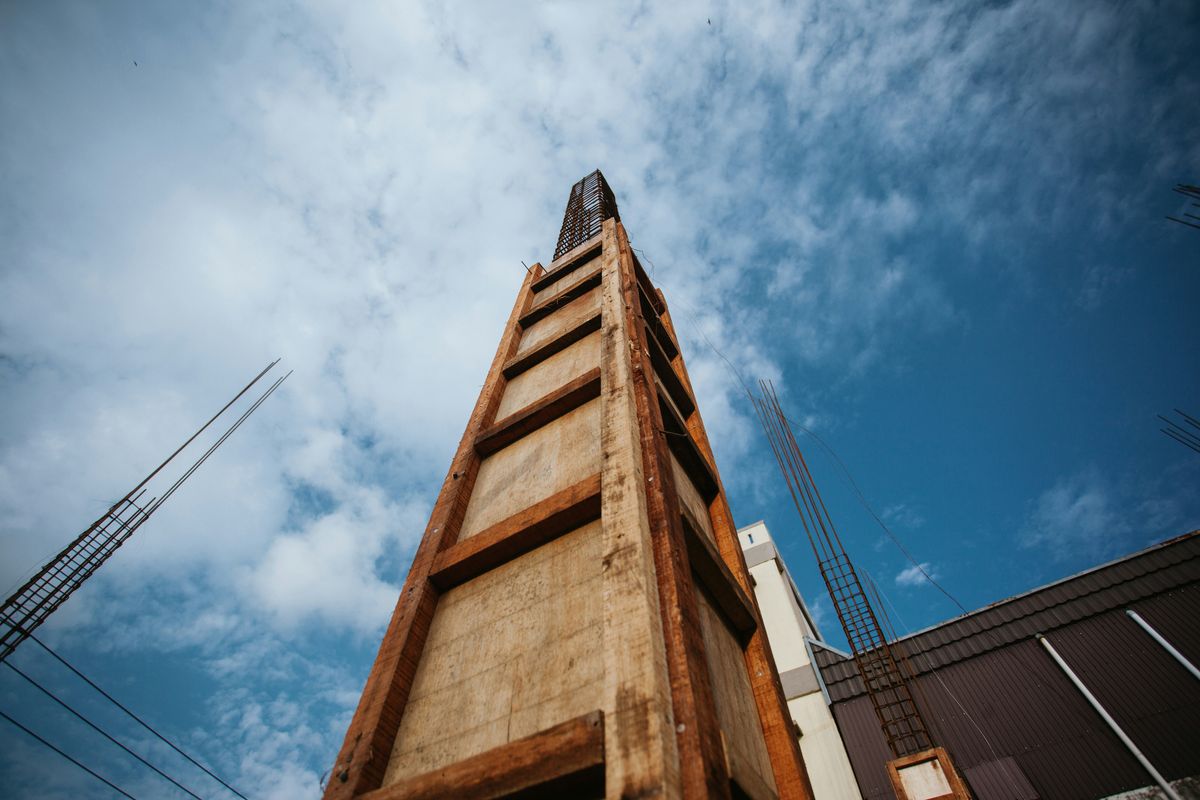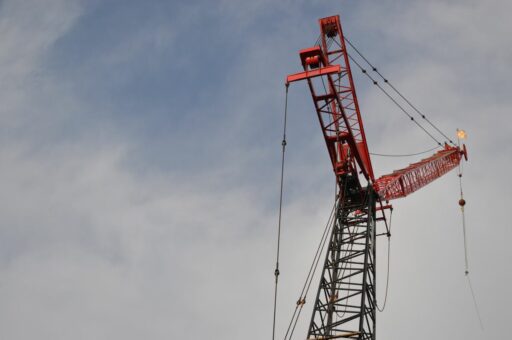In the realm of construction, the safety of subcontractors is paramount. The role of construction safety contractors is critical in orchestrating a safe working environment amidst the myriad of potential hazards present on a construction site. Through strategic planning, comprehensive safety measures, and fostering a culture of safety and collaboration, these professionals ensure the well-being of all workers and the smooth progression of projects. This article delves into the best practices that construction safety contractors employ to safeguard subcontractors and promote a culture of safety within the industry.
Key Takeaways
- Leadership must demonstrate unwavering commitment to safety, establishing a top-down approach that permeates the entire organization.
- A comprehensive site safety plan, tailored to specific site conditions and constraints, is the blueprint for protecting workers.
- Continuous education and training, coupled with consistent safety inspections, are instrumental in maintaining high safety standards.
- Cultivating a safety-centric jobsite culture and ensuring clear communication are vital for collaboration and continuous improvement.
- Strategic selection of subcontractors and meticulous documentation of safety practices are key to ensuring accountability and compliance.
Prioritizing Safety from the Top Down

Commitment from Leadership
The foundation of construction safety begins with a strong commitment from leadership. Owners and organizational leaders must prioritize safety as a core value within their company culture. This commitment is reflected in daily communication, work routines, and the active involvement of every team member in creating a safer operational environment.
By embedding safety regulations and accident prevention into the fabric of daily operations, a proactive stance on safety becomes second nature to all involved.
Leadership’s role extends to fostering an atmosphere of transparency, where team members are encouraged to share updates, concerns, and suggestions. This openness not only builds trust but also enables the team to proactively address risks, rather than reacting to them after they occur.
- Keep safety a top priority
- Encourage open communication
- Address safety concerns promptly
- Maintain a heightened sense of vigilance
The commitment from the top sets the tone for the entire project, ensuring that safety is not just a policy, but a practice that is lived out on the jobsite every day.
Comprehensive Site Safety Plan
A comprehensive site safety plan is pivotal for delineating the safety procedures tailored to the unique challenges and requirements of each construction site. It serves as a blueprint for managing safety throughout the project’s lifecycle, from initial risk assessment to final inspections.
The plan should detail the scope of work, identify potential hazards, and specify the safety measures to be implemented. It’s a living document that must be updated as conditions change and new risks emerge. Accessibility is key; the plan must be readily available to all parties involved, ensuring that everyone is informed and aligned on safety protocols.
By establishing a clear and thorough site safety plan, contractors set the stage for a safer work environment, where risks are managed proactively rather than reactively.
Effective site safety plans often include:
- Risk identification and assessment
- Emergency response procedures
- Safety training schedules
- Equipment and material handling guidelines
- Communication protocols
These components work in concert to create a robust framework for safety, which is essential for protecting the well-being of subcontractors and all other personnel on site.
Ongoing Education and Training
To maintain the highest standards of safety, construction safety contractors must ensure that ongoing education and training are integral to their operations. Workers must be kept abreast of the latest safety protocols and regulations through continuous learning opportunities. This not only includes initial training but also periodic refreshments and updates to accommodate new safety practices and technologies.
- Regularly scheduled training sessions
- Specialized training for specific tasks or equipment
- Updates on regulatory changes and industry best practices
By embedding education into the fabric of the construction process, contractors can foster a proactive approach to safety, where learning is as natural as the work itself.
It is also essential to tailor training programs to the unique challenges of each site. For instance, a high-rise construction project may require specialized fall protection training, while a project near water might necessitate marine safety instruction. The goal is to equip every worker with the knowledge and skills necessary to navigate the complexities of their specific work environment safely.
Consistent Inspections
Consistent inspections are a cornerstone of maintaining a safe construction environment. Regular safety inspections are crucial for identifying and mitigating potential hazards before they lead to accidents or violations. These inspections, carried out by both internal team members and external safety experts, ensure that safety measures are not only in place but are effective and adhered to.
By proactively addressing risks, consistent inspections serve as a preventive measure, safeguarding the well-being of all on site and protecting the project from costly delays and damage to reputation.
The process of consistent inspections includes several key steps:
- Reviewing the comprehensive site safety plan for compliance
- Evaluating the effectiveness of implemented safety measures
- Identifying any new or previously unnoticed hazards
- Assessing the risk associated with identified hazards
- Documenting findings and recommending corrective actions
These steps help in creating a feedback loop that continuously improves safety standards and practices on the construction site.
Understanding and Leveraging Site Specifics

Assessing Site Constraints and Opportunities
A thorough assessment of site constraints and opportunities is crucial for the successful management of a construction project. This initial analysis lays the groundwork for identifying potential challenges and leveraging them into advantages.
Site accessibility is a pivotal factor that influences the efficiency of a construction project. Issues such as difficult access for personnel and equipment can lead to delays and increased costs. Therefore, a detailed plan that considers egress, local traffic, safe pathways, and emergency access is indispensable.
The physical characteristics of the site, including terrain, topography, and soil conditions, must be evaluated to ensure that the construction plan is feasible and safe.
Understanding these elements allows for the strategic scheduling of material deliveries and adherence to regulations, which are essential for maintaining project timelines and safety standards.
Incorporating Rigorous Quality Management Procedures
To ensure the well-being of subcontractors and the integrity of the construction project, rigorous quality management procedures are indispensable. Clearly defining quality standards for materials, workmanship, and final outcomes is the cornerstone of effective quality management. This alignment is crucial for meeting project requirements and delivering high-quality results.
- Establish clear and detailed quality standards
- Conduct regular inspections and quality tests
- Reduce rework and improve the final product
A comprehensive quality oversight plan not only safeguards the project’s success but also enhances client satisfaction and the contractor’s reputation. A history of projects completed with precision and minimal issues is a testament to the effectiveness of these quality management practices.
A track record of precision and minimal issues due to effective quality management builds trust and credibility, solidifying a contractor’s market position.
Utilizing Technology for Enhanced Safety
The integration of technology into construction practices has revolutionized the way safety is managed on-site. Construction management software and tools significantly contribute to the enhancement of safety measures by providing a centralized platform for all safety-related documentation and communication. This includes project documents, plans, contracts, and real-time updates, which are crucial for maintaining a high standard of safety for subcontractors.
- Real-time incident reporting allows for immediate action and investigation.
- Wearable technology monitors the health and safety of workers on-site.
- Drones conduct site surveys, identifying potential hazards without putting workers at risk.
- Mobile apps facilitate quick access to safety protocols and emergency procedures.
Embracing technology not only streamlines safety processes but also fosters a proactive approach to risk management. By leveraging these tools, construction safety contractors can anticipate potential issues and implement corrective measures before they escalate into more significant problems.
Cultivating a Culture of Safety and Collaboration

Fostering a Healthy Jobsite Culture
A healthy jobsite culture is the bedrock of a safe and productive construction environment. It is shaped by the collective values, attitudes, behaviors, and communication patterns of everyone on the project, from leadership to subcontractors. A positive jobsite morale is crucial for fostering open communication and effective collaboration among the various trades and stakeholders involved.
By approaching the project as a unified team, a culture that promotes safety, efficiency, and mutual respect is cultivated, which is essential for the well-being of all workers.
To ensure the development and reinforcement of a positive jobsite culture, several steps can be taken:
- Encourage regular team-building activities to strengthen relationships.
- Recognize and reward safe practices and collaborative efforts.
- Implement clear and consistent communication channels.
- Provide a platform for all workers to voice concerns and suggestions.
These actions not only align with the project’s goals and values but also contribute to an environment where every individual can thrive and add value to the project’s success.
Prioritizing Open and Clear Communication
In the realm of construction safety, effective communication is not just about exchanging information; it’s about ensuring that every team member comprehends and acts upon safety protocols. Open and clear communication channels are vital for the swift dissemination of safety updates and the immediate reporting of hazards.
Emphasizing clear, open, and respectful communication can enhance collaboration and minimize misunderstandings.
Regular team meetings, email updates, and the use of dedicated communication platforms are essential tools that facilitate this process. Moreover, the use of written communication and signage plays a crucial role in making sure that all workers fully understand safety-related information.
Here are some key practices to ensure effective communication on the jobsite:
- Establishing reliable communication tools and methods
- Conducting regular safety briefings and debriefings
- Encouraging team members to voice safety concerns
- Documenting and reporting all safety incidents and near-misses
Continuous Improvement through Feedback
In the realm of construction safety, continuous improvement is pivotal. It is not enough to establish safety protocols; they must evolve with each project, informed by the feedback from those on the ground. This iterative process ensures that safety measures are not only theoretically sound but practically effective.
By fostering an environment where feedback is actively sought and valued, construction safety contractors can pinpoint areas for enhancement and implement changes swiftly, thereby reducing the likelihood of accidents and improving overall site safety.
Feedback mechanisms can take various forms, from informal discussions to structured debriefings. Below is a list of common feedback channels used to drive continuous improvement:
- Post-incident reviews
- Regular safety meetings
- Anonymous reporting systems
- Satisfaction surveys among subcontractors
- Performance evaluations with actionable insights
Each channel provides a unique perspective, contributing to a comprehensive understanding of the safety landscape and highlighting opportunities for improvement.
Strategic Planning and Task Sequencing

Mapping Out the Sequence of Tasks
Sequencing is a critical component in construction scheduling, ensuring that each task is arranged in a logical order to facilitate smooth project progression. This strategic arrangement is essential for efficiency and to accommodate dependencies between tasks. A well-defined sequence allows for the creation of a comprehensive project plan, detailing each task’s specifics, resource needs, timelines, and milestones.
Effective communication of the task sequence to all involved parties, especially specialized contractor partners, is imperative. It ensures that everyone understands the order and timing of tasks, confirming availability and preventing misunderstandings. This clarity is crucial for maintaining a synchronized workflow and meeting project deadlines.
Accountability is heightened when tasks and responsibilities are clearly documented. This structure aids in problem-solving and reduces the potential for disputes, creating a more harmonious and productive jobsite environment.
- Workforce Management
- Workforce Planning
- Field Productivity
Aligning Subcontractor Schedules with Safety Protocols
The alignment of subcontractor schedules with safety protocols is a critical step in ensuring the smooth progression of a construction project. Effective communication of the task sequence to all subcontractor partners is essential to confirm their availability and prevent misunderstandings. This coordination helps to manage expectations and allows for the timely procurement of necessary resources.
- Review and communicate the task sequence to all parties involved.
- Confirm subcontractor availability and readiness to perform tasks.
- Adjust schedules to accommodate safety training and necessary breaks.
- Monitor compliance with safety protocols throughout the task execution.
By meticulously aligning subcontractor schedules with safety measures, construction safety contractors can minimize risks and enhance the overall efficiency of the project.
It is also vital to collaborate with internal project team members and specialty contractors to ensure that project timelines are realistic. Overloading team members with unrealistic deadlines can lead to burnout and compromised safety. As the project evolves, continuous review and adaptation of the project plan are necessary to respond to changes and maintain alignment with the project’s safety objectives.
Ensuring Timely and Safe Task Execution
To ensure the timely and safe execution of tasks, effective collaboration and communication with all project stakeholders is essential. This involves aligning the schedules of various subcontractors with the established safety protocols and project timelines. By doing so, potential delays can be anticipated and mitigated, preventing the overloading of team members and maintaining high-quality standards.
- Collaborate with project team members and specialty contractors to assess timeline feasibility.
- Communicate sequencing orders clearly to avoid misunderstandings.
- Document tasks, responsibilities, and timelines for accountability.
Ensuring that each subcontractor understands their role and the timing of their tasks is crucial for the smooth progression of the project. It also fosters a positive jobsite culture that is conducive to safety and efficiency.
By meticulously planning and sequencing tasks, construction safety contractors can create an environment where safety is not compromised by the pressures of deadlines. This strategic approach not only enhances the well-being of subcontractors but also contributes to the overall success of the construction project.
Partnering with the Right Subcontractors

Strategically Selecting Subcontractor Partners
The process of strategically selecting subcontractor partners is pivotal to the success of any construction project. It involves a meticulous prequalification stage where general contractors evaluate potential partners based on a variety of criteria. This ensures that only the most reliable and capable subcontractors are chosen, which is essential for maintaining high standards of quality and safety on the job site.
Key factors in the selection process include past performance, safety rating, experience, and financial stability. These elements are critical in predicting the future success of subcontractors and their ability to meet project demands. A well-chosen subcontractor not only contributes to smoother project execution but also enhances overall outcomes and client satisfaction.
By investing time in selecting the right subcontractors, general contractors lay the groundwork for a collaborative and efficient project environment. This strategic approach is a cornerstone in building a foundation for success.
It is also important to align subcontractor expertise with the specific goals of the project. For instance, if a project prioritizes sustainability, the general contractor should seek out subcontractors with a proven track record in this area. This alignment ensures that all parties are working towards a common objective, thereby optimizing project results.
Emphasizing Safety in Subcontractor Agreements
In the realm of construction, subcontractor agreements are pivotal in emphasizing safety and ensuring compliance with safety standards. These contracts serve as a formal commitment to safety practices and protocols, delineating clear expectations for all parties involved.
- Define safety responsibilities and expectations
- Outline consequences for safety violations
- Establish protocols for emergency situations
- Require regular safety training and updates
By embedding safety clauses into subcontractor agreements, construction safety contractors create a legally binding framework that reinforces the importance of safety on the jobsite.
Ensuring that these agreements are comprehensive and specific not only protects the well-being of subcontractors but also safeguards the project owner from potential liabilities. It is a proactive step that underscores the collective commitment to a safe working environment.
Documenting Safety Compliance and Practices
Proper documentation is a cornerstone of ensuring safety compliance and practices in construction. Documentation serves as a historical record, capturing critical information that maintains transparency and accountability among all stakeholders. It is not only about recording what has been done but also about planning and communicating what will be done to maintain safety standards.
- Documentation includes regulatory standards and permits adherence.
- It outlines the scope of work, change order procedures, and contract specifics.
- It provides evidence to support legal claims or defenses.
Effective documentation is integral to the construction process, from initial planning to project completion and beyond.
Consistent documentation practices are vital for capturing the nuances of each project. For instance, a comprehensive site safety plan should be documented and made accessible to all workers and visitors. This ensures that everyone on-site is aware of the safety procedures for various tasks and emergencies. Similarly, records of safety inspections are crucial for evaluating the effectiveness of safety measures and ensuring compliance with safety regulations.
Conclusion
In conclusion, the role of construction safety contractors is indispensable in safeguarding the well-being of subcontractors and all site personnel. Through a combination of leadership commitment, comprehensive safety plans, and ongoing education, these professionals create a proactive safety culture. Regular inspections, understanding site-specific challenges, and clear communication are key to preemptively addressing potential hazards. Moreover, the strategic selection of subcontractor partners and meticulous documentation reinforce a robust safety framework. Embracing technology and rigorous quality management procedures further enhance the efficacy of safety measures. Ultimately, the collective efforts in construction site management not only protect individuals but also contribute to the successful and timely completion of projects, underscoring the value of prioritizing safety in every aspect of construction operations.
Frequently Asked Questions
How do construction safety contractors ensure the well-being of subcontractors?
Safety contractors ensure subcontractor well-being by enforcing a top-down commitment to safety, developing comprehensive site safety plans, providing ongoing education and training, conducting consistent inspections, and fostering a culture of safety and collaboration.
Why is safety a top priority in construction site management?
Safety is paramount in construction due to the higher potential for accidents and fatalities. It ensures the well-being of workers and visitors, minimizes accidents, and maintains a productive and compliant work environment amidst various hazards.
What role does technology play in enhancing construction site safety?
Technology enhances construction site safety by providing advanced tools for risk assessment, real-time monitoring, and improving communication and documentation, thereby reducing the likelihood of accidents and improving overall safety management.
How does a comprehensive site safety plan contribute to a safe work environment?
A comprehensive site safety plan outlines specific safety procedures for different work tasks and emergencies, ensuring that all workers, subcontractors, and visitors are aware of and can follow the necessary precautions to maintain a safe work environment.
What is the importance of consistent inspections in construction safety?
Consistent inspections are crucial for identifying potential hazards, evaluating the effectiveness of safety measures, and ensuring compliance with safety regulations. They help proactively mitigate risks, saving lives, and reducing financial and reputational costs associated with workplace accidents.
How do safety contractors foster a positive jobsite culture?
Safety contractors foster a positive jobsite culture by prioritizing open and clear communication, aligning the project’s goals and values with the workforce, and encouraging continuous improvement and collaboration, creating an environment where workers can thrive and contribute to the project’s success.





